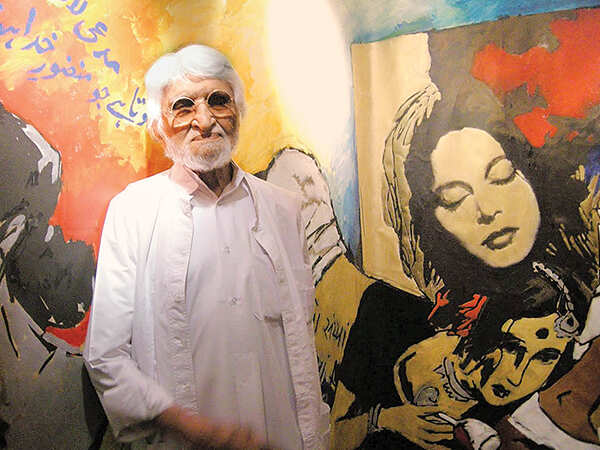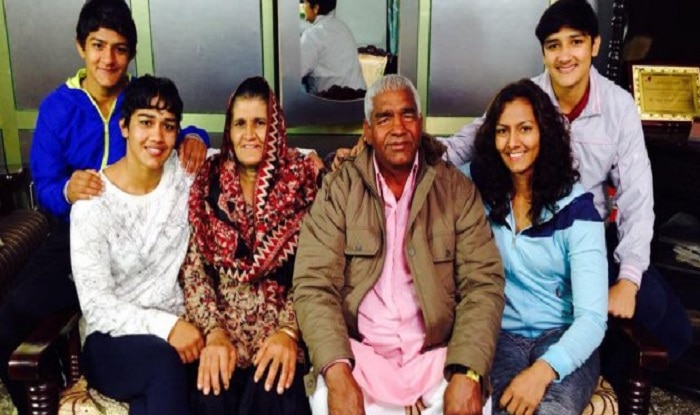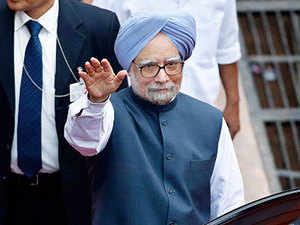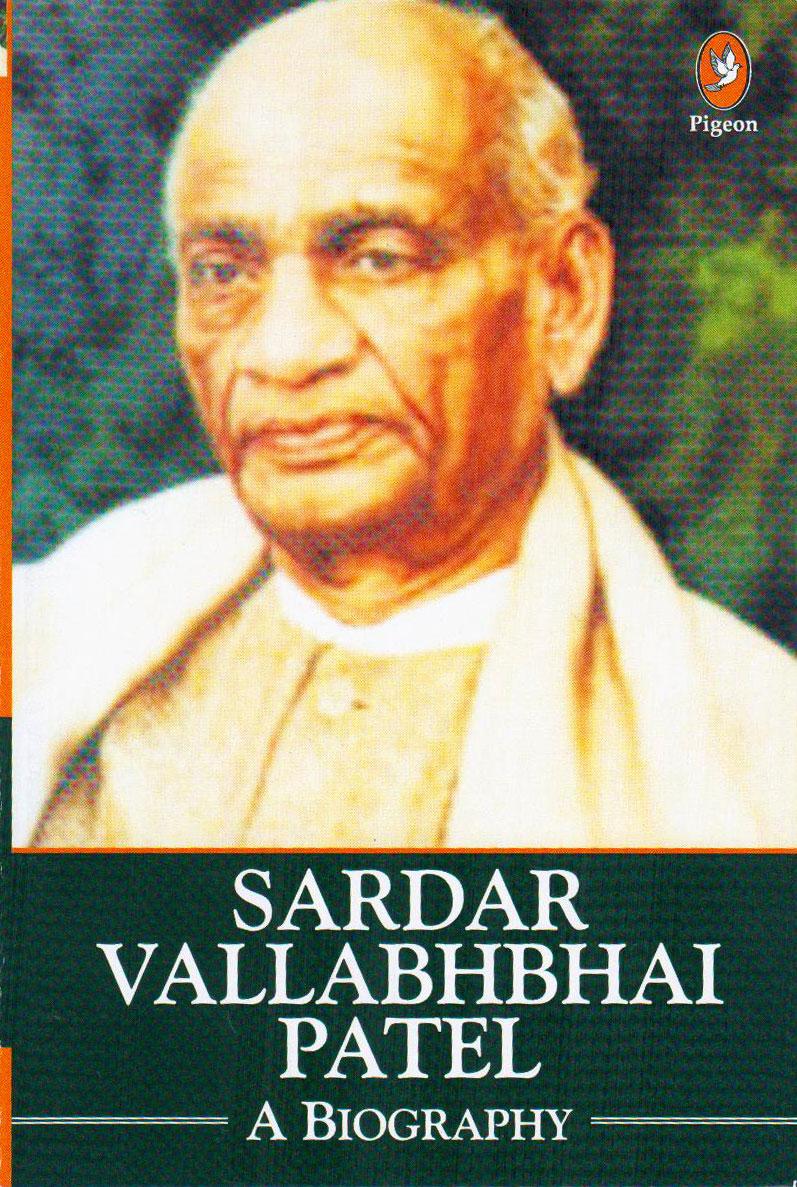10 Indian Biographies On Inspirational People
1. Husain: Portrait of an Artist By Ila Pal


In the 1990s, Maqbool Fida Husain's name was synonymous with art, as far because the Indian public was concerned. He became the primary Indian artist whose works sold for over Rs 10 lakh — an unimaginable figure back within the day. His showmanship, very similar to his talent, was an inherent trait that reached new heights. This was the amount where Husain had a show called Shwetambari — White Is Superabundant which agitated some people to the extent that they even took to violence. Once he used 1500m of white long cloth piece, which was cascading, stretching, tightening, canopying, then let loose to the touch the ground and rise again. He also scattered 300 kilos of newspapers across the ground.
2. Akhada: The Authorized Biography of Mahavir Singh Phogat By Saurabh Duggal

The lifetime of a pehelwan (wrestler) is in no way easy. Not everyone can devote their developing years to strenuous training, endless sacrifices, and bouts that feel longer than simply a couple of minutes. Geeta and Babita Phogat and other two sisters too, however, they learned early in their lives that this “cycle of wrestle-eat-sleep-repeat” would be unending for them.
The prime perpetrator behind this cycle, their father and coach Mahavir Singh Phogat, is that the central figure in Saurabh Duggal’s Akhada. The biography traces not only the Phogat sisters’ journey to wrestling stardom but also Mahavir’s life from an era when sports was just another route to secure a government job and wrestling was meant just for mard jaat (menfolk). But what really spurred Mahavir to coach his four daughters? Duggal’s book offers some key revelations about the person who is taken into account one among India’s greatest wrestling coaches.

Though one may think that Mahavir was curious about wrestling since the very beginning,, as Duggal writes, it had been kabaddi that was his “first love”. Wrestling only came to him when he was in school VIII. From his training days at Master Changdi Ram’s akhada in Delhi, working with the Haryana State Electricity Board and Border private security force, to trying his luck within the property business and politics, there are many things within the book that haven't been mentioned before within the public sphere. Another milestone that brings the reader on the brink of Mahavir’s thinking is that the day he actually made the “crucial decision to coach the youngsters in his family to win Olympic gold”.
3. Outlaw: India's Bandit Queen and Me By Roy Moxham

When Moxham was asked why he wrote this memoir, "Outlaw: India's Bandit Queen and Me", he claimed it had been to the line to the record straight on Phoolan. consistent with him, people's impressions of Phoolan are shaped mainly by Shekhar Kapur's movie "The Bandit Queen" (based on the book by Mala Sen). Now while the movie is sympathetic to Phoolan, there are scenes within the movie that she vehemently protested. One was the depiction of the brutal rape scene and therefore the other was how Kapur had the actress that plays Phoolan, paraded naked around the village well. Phoolan thought it had been cruel and insensitive to depict her that way. She made Moxham write to Channel 4 several times to prevent the movie from being released within the UK, but his pleas fell on deaf ears. Moxham, true friend that he's, supported her dislike of the movie and will never bring himself to observe it, until he began to write down the memoir, that is.

Another reason Moxham wanted to write down this book is that it is the only account of the previous MP's life after her release from jail in 1994. The book is predicated on the extensive correspondence between the 2, albeit Devi didn't know English. The correspondence led to an unlikely friendship that lasted till the time Phoolan Devi was assassinated in 2001.
What am I able to say about Moxham's writing? Well, it's basic to mention the very least, but this is often an entertaining read and you'll tell, right from the get-go that his interest in Phoolan's welfare is kindly and honest. When he's not visiting her in India he is traveling the country, usually little towns and villages within the North, and his descriptions of those little towns made for welcome reading. More importantly, reading about Phoolan's life drives us to ask: would she become a bandit had she not been an uneducated woman, during a backward village with so few choices? I feel the solution is NO!!! She was spirited, charismatic, but poor and uneducated. to form matters worse she was born into the incorrect caste and within the wrong gender. of these factors conspired to form her whom she became. Her story is actually worth reading.
4. Vivekananda: A Biography By Swami Nilkanthananda

In the preface, Parachin offers ten quotations by Swami Vivekananda to whet our interest during this extraordinary spiritual teacher. Here is that the one we liked best: "Take up one idea. Make that one idea your life — consider it, the dream of it, survive that concept. Let the mind, muscles, nerves, every part of our body to be filled with that concept, and just leave every other idea alone. this is often the thanks to success, that's the way great spiritual giants are produced."

Vivekananda studied for 2 years under the guidance and spiritual direction of Sri Ramakrishna and when this pathfinding teacher died, he took over because of the leader of his disciples. After years as a wandering monk, Vivekananda visited Vedic centers in India and later established centers in NY and California. Although he died at the first age of 39, Swami Vivekananda popularized Vedic terms and ideas like karma, meditation, chakra, reincarnation, self-realization, enlightenment, and guru. Parachin notices him as "the towering figure from the East for helping the West develop an excellent interfaith appreciation.
5. Nani A. Palkhivala: A Life By M.V. Kamath

God’s gift to India" is what C. Rajagopalachari called this extraordinary man. Nani A. Palkhivala’s versatility and extraordinary achievements are recorded in innumerable books both by Palkhivala himself also as by his many admirers. But so far there has been no plan to present a comprehensive biography of the jurist’s entire lifetime of 82 years.
No one but a genius could have achieved such eminence from the type of disadvantages Palkhivala suffered. He didn't have family wealth or connections in society. His grandfather ran a closed corporation of building palanquins or palkis (hence the family name). then shut down, his father tried his hand at fixing another business that didn't take the family too far. In childhood, young Nani suffered from a clumsy stammer. The writer’s cramps forced him to require the assistance of a writer for his exam papers. He had no connections to enter the highly competitive Bombay bar at that time. within the youth of his profession, he worked part-time at the Bombay Race Course as a totalizer. As Palkhivala said in later years, he had the maximum amount chance of becoming a successful advocate or orator as a victim of MS had of becoming an Olympic athlete.
The well-known journalist and writer M.V. Kamath’s biography of Palkhivala are built on first-hand accounts of his life from acquaintances, associates, friends, admirers, and relations. a serious a part of the book may be a reproduction of Palkhivala’s speeches, writings, correspondence, and written submissions in court in important cases argued by Palkhivala accessed from the Tata archives at Pune. The result's a connected, well-documented account of the lifetime of a gifted individual with powerful mental faculties who by grit, determination, and relentless ambition overcame adversity and rose to the heights of fame. Palkhivala’s vehement criticism of the government’s economic and taxation policies during the times of socialism are reproduced here and vindicated today.
6. The Man Who Knew Infinity: A Life of the Genius Ramanujan By Robert Kanigel

The anomaly in question is in fact Srinivasa Ramanujan (pronounced rah-MAH-na-jun), the Indian clerk who in 1913 at the age of 25 wrote a 10-page letter to G. .H. Hardy, begging this eminent English mathematician to think about some ideas that Ramanujan had about numbers. The best-known anecdote about Ramanujan and Hardy stems from an event that happened six years later, long after Hardy, having recognized the genius of Ramanujan's letter, had arranged for him to return to England and study at Cambridge.

7. The Accidental Prime Minister: The Making and Unmaking of Manmohan Singh By Sanjay Baru

Since Manmohan Singh's PMO also included a special adviser, a novelty created to accommodate M.K. Narayanan, a part of the NSA's turf, namely the world of internal security, was hived off to him.

8. Sardar Vallabhbhai Patel A Biography By Kaushal Goyal

According to custom, the young bride would still accept her parents until her husband started earning and will establish their household. Sardar Patel traveled to attend schools in Nadiad, Petlad, and Borsad and living self-sufficiently with other boys. He reputedly cultivated a stoic character. a well-liked anecdote recounts that he lanced his own painful boil without hesitation, whilst the barber charged with doing it trembled. When Patel passed his matriculation at the relatively late age of twenty-two, he was generally regarded by his elders as an unambitious man destined for a commonplace job. Patel himself, though, harbored an idea to review to become a lawyer, work and save funds, visit England, and become a barrister.
Patel spent years faraway from his family, studying on his own with books borrowed from other lawyers, passing his examinations within two years. Fetching his wife Jhaverba from his parents' home, Patel found out his household in Godhra and was called to the bar. During the various years it took him to save lots of money, Patel – now an advocate – earned a reputation as a fierce and skilled lawyer. Patel had a daughter, Maniben, in 1904 and a son, Dahyabhai, in 1906. Patel also cared for a lover affected by the plague when it swept across Gujarat. When Patel himself decreased with the disease, he immediately sent his family to safety, left his home, and moved into an isolated house in Nadiad (by other accounts, Patel spent this point during a dilapidated temple); there, he recovered slowly.
9. Indira: The Life of Indira Nehru Gandhi By Katherine Frank

As Katherine Frank suggests during this that it's an excellent biography. the carnage that broke out after the assassination - quite 2,000 Sikhs were slaughtered in Delhi alone - was a depressing indication about that Indira Gandhi's great mission in life. which she had inherited from her father, had failed. For the Nehrus were dedicated to the notion of a secular state during which no creed or caste would dominate anyone else; where the religious card that had beggared and bloodied the country's history for a long time could not be played.
After many centuries of alien rule, first by the Mughals then by British, this was to be a democracy of unique and great distinction. Nehru spent himself endlessly during this cause, and his daughter gave her life for it. The story of Gandhi may be a chronicle of what, between them, they did achieve; and although it's now spat upon by their infinitely less worthy successors, that was no small thing.
10. Biography of Bhagat Singh By M.M. Juneja

I am about four-generation far away from the central events during this book, still, the author made me understand how the martyrdom of this 23-year-old awakened a whole nation to the grave injustice of British rule. Also, he was very successful in unraveling the various layers of Bhagat Singh: as a genius intellectual, socialist, romantic, atheist, and far more.
The only complaint that I even have about this book is that the author's repeated use of Hindi verses without a translation at critical points. I do not know why Hind authors don't understand this but once you sell an English book, the reader expects nothing but English in it. It doesn't help tons that the author, very magnanimously, used English letters to make these sentences: it's still Hindi.

Nice website, keep modifying...
ReplyDeleteNice website, keep modifying...
ReplyDelete